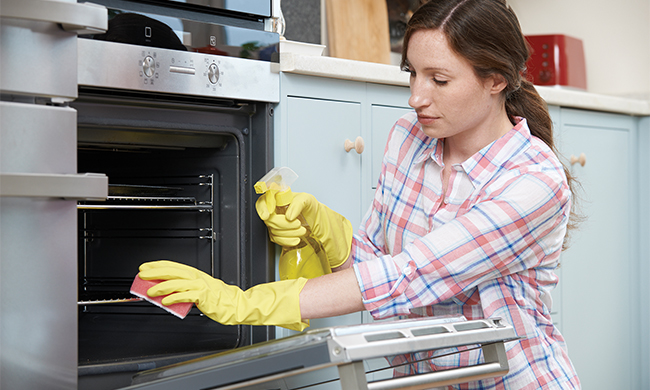While you often hear about cold-weather fashion and beauty essentials, there is some maintenance your home needs too. Give your sanctuary some love with these five steps from the home safety experts at Kidde.
Clean Your Oven
Ranges and cooktops are involved in 62% of home fires, according to the National Fire Protection Association. Stovetops and ranges, in particular, caused 87% of home fire deaths. Particularly in the winter when comfort foods are prominent, it’s necessary to clean your oven and stovetop to remove grease and fat, which can ignite. Always keep towels and oven mitts away from hot appliances.

Keep a Kitchen Fire Extinguisher Ready
Research from the National Fire Protection Association shows about half of all home fires start in the kitchen, so it’s important to have a fire extinguisher handy. Look for one specifically designed for kitchen applications, and keep the extinguisher behind you when cooking. In the event of a fire, there’s risk of burning yourself if you must reach over the fire to grab the extinguisher.
Know Holiday Lighting Rules
About 75% of holiday tree fires happen in December or January, according to the National Fire Protection Association, making now the perfect time to start being vigilant. Some rules of thumb: use flame-resistant decorations, utilize lights properly indoors or outdoors and look for electrical decorations that are approved by a nationally recognized testing lab such as UL, Intertek or CSA. Also avoid plugging more than three light strings into each other; opt for a power strip instead.
Check Your Smoke Alarms
Check your smoke alarms to ensure they are less than 10 years old. Winter and the holiday season are peak times for home fires, but according to industry experts, few realize smoke alarms need to be replaced at least every 10 years. In fact, common misconceptions about smoke alarm maintenance, such as hardwired alarms don’t need to be changed, can leave you more vulnerable.
Smoke alarms are just like every other appliance; they need replaced periodically. This includes units that are hardwired into your home, even if you have changed the batteries. If you’ve forgotten when the alarms were installed, check the date on the back of the smoke alarm. If you’re interested in a long-term fix, alarms are available with a built-in 10-year battery. When times comes to replace the unit, the alarm will signal.
Install Carbon Monoxide Alarms
On average, one person dies each day from carbon monoxide (CO) poisoning in the United States. CO is known as the silent killer because you can’t see, smell or taste this poisonous gas. During winter months, CO incidents spike but symptoms can easily be mistaken for the flu. Natural gas furnaces, water heaters, ranges, gasoline-powered tools, cars, wood-burning stoves, fireplaces and more produce CO. Because CO doesn’t rise like smoke, it mixes with the air and can go through drywall. From plug-in to battery-operated and LED display, CO alarms are available in a range of options. Install alarms throughout the home, particularly outside of sleeping areas.
Find more holiday safety tips and information at Kidde.com.
Photo courtesy of Getty Images (woman cleaning stove)
SOURCE:
Kidde





No comments:
Post a Comment